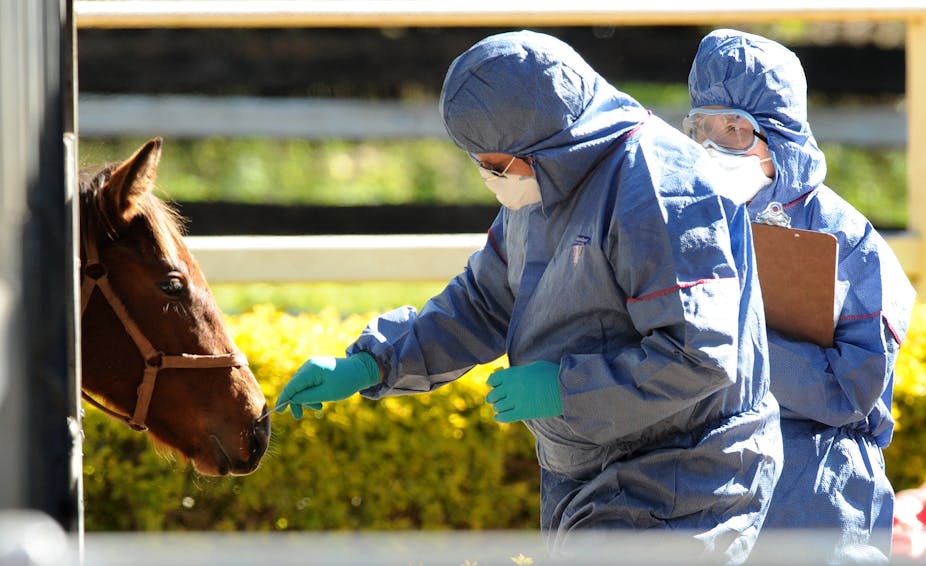As Queensland authorities confirm the third outbreak of Hendra virus within a week, researchers are moving to fast track a horse vaccination for the deadly virus, which can spread from horses to humans and has killed four of the seven people infected in past outbreaks.
The vaccine has been in development for more than ten years, since shortly after the first outbreak of the disease was discovered in Hendra, Queensland.
Deborah Middleton, Senior Veterinary Pathologist at CSIRO’s Australian Animal Health Laboratory, explains how the vaccine will work:
When horses are vaccinated, they mount a protective response against the part of the Hendra virus particle that is important for binding the virus to body cells – this is the first stage of infection.
If the horse then comes into contact with Hendra virus, from the faeces and urine of flying-foxes, this protective response blocks the virus from infecting their body cells and allows their immune system to destroy it.
When is the vaccine likely to be available?
Our project plan currently aims to have the vaccine available in 2013, and this process has already been fast-tracked by getting a vaccine company involved earlier to formulate the vaccines for the research project.
We hope to speak with the regulatory authorities shortly to ensure we’ve exhausted all avenues for shortening the time it takes to get the product to market.
Although time is important, it’s equally important that we don’t cut short safety studies and other work that might influence the longer term success of the vaccine in the field.
Do you expect it will be given to all horses or just those at increased risk?
It’s likely that, in the first instance, vaccine uptake will be greatest in areas where there have been previous outbreaks of Hendra virus – eastern Queensland and north-eastern New South Wales.
But because there’s evidence that all flying-fox populations in Australia carry the virus, it’s possible that horse owners in other states may also wish to vaccinate their animals.
Could the vaccine be adapted in future to be given to humans in close contact with horses?
It’s theoretically possible that this could be done, but the registration pathway for getting a vaccine accepted for use in humans takes many years and it’s unlikely that it would be seen as a commercially-viable option.
Our strategy of targeting vaccination of horses is aimed at removing the immediate source of infection to people – the only humans affected by the disease are those in contact with horses sick from Hendra virus.
Is there potential for your vaccine developments to assist in the development of a treatment for hendra virus?
The vaccine work won’t directly contribute to research on treatment for people infected with Hendra virus, but we have, with our US colleagues, developed a post-exposure therapy targeting the same critical portion of the virus particle as the vaccine.
This therapy is available (on a case by case basis, as determined by Queensland Health) for people considered to be at high risk of contracting the infection, so those who have recently been exposed to an infected horse.
Is Hendra virus isolated to Australia? Or do you expect this vaccination will be available internationally?
Hendra virus is only found in Australia but it’s expected the vaccine would also provide protection against the closely related Nipah virus, which is found in Southeast Asia.
Testing for Hendra virus can take several weeks, as we’re seeing with the eight exposed people in Queensland – why is this process so protracted?
The incubation period of Hendra virus is up to several weeks, so testing needs to be carried out until it is certain that a person has not become infected.
Results of testing are generally available within 24hrs of the sample reaching the testing laboratory.
For more on the Hendra virus and what makes it so dangerous, read The Conversation’s Q&A with Dr Peter Daniels, Assistant Director of the CSIRO’s Australian Animal Health Laboratory.

